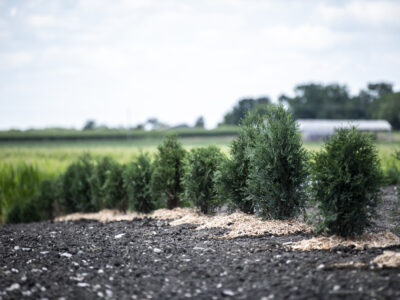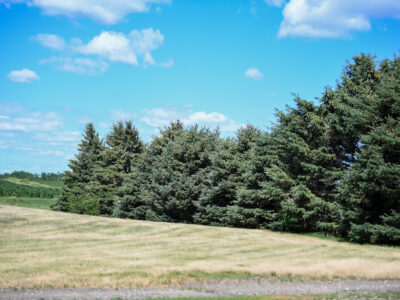Diagnosing Tree Problems: A 3-Step Solution
07-01-2016 in Green Farmstead Partner
After devoting your time and money to a newly planted farm windbreak, the last thing you want is for your trees to become unhealthy, lose their aesthetic appeal or die. The reality is, trees are susceptible to a number of health threats including environmental stresses, siting problems, animal injury, disease and insect infestations.
Diagnosing tree problems doesn’t necessarily require referencing a textbook or online resource. Instead, the process can start with you. By following these three easy steps, your own observations may be the key to finding the right solution.
Step 1: Examine the Foliage
Systematically examine your trees by starting with the leaves or needles. Note any discolored foliage including abnormal shades of yellow, light green, black or browning leaf margins. You should also check for the presence of holes, ragged edges, spots, deformities or insects, as well as any sign of prematurely fallen leaves.
Step 2: Assess the Trunk and Branches
Direct observation of the trunk and branches may reveal mechanical bark injuries, ice, hail, or wind damage, or evidence of insect activity. Additionally, the presence of any wet, sticky substances, may indicate a bacterial infection, while fungal conks or cankers may indicate internal decay.
Step 3: Consider the Roots
Finally, an inspection of what’s happening below the soil surface may lead to an accurate diagnosis. Check the base of the tree to determine planting depth, and note any changes to the surrounding soil including compacting, excessively wet or dry ground or standing water. You should also verify if there is any visual evidence of girdling roots or other signs of physical injury.
Other Important Considerations
Additional characteristics to keep in mind while documenting your observations include:
– Specific variety or cultivar
– Approximate age or tree size
– Soil type
– Water, fertilizers or chemicals applied to (or near) tree
– Evidence of injury to surrounding vegetation
– Date or time of year when symptoms appeared
At the end of the day, your eyes are your best resource for initiating a simple tree diagnosis.
By Haley Banwart, CSIF Communications Intern
Recommended News

Growing the Ag Environment
Ryan and Lana Reed of Wapello County spent an almost-spring-like March day tending to the windbreak near two of their hog barns. Planted in 2010, the fast-growing austree hybrid willow...
Read More
Ames Landscaper Joins Green Farmstead Partner Program
West Des Moines, Iowa – April 4, 2023 — Landscape Legends of Ames has been designated a participating landscape professional in the Coalition to Support Iowa’s Farmers’ (CSIF) Green Farmstead...
Read More
Derecho Brings Opportunity for Story County Family
Brian Sampson of Story County is an optimist. “I like to be around people who think most things are possible,” says Sampson. When the derecho rolled through his farm last...
Read More